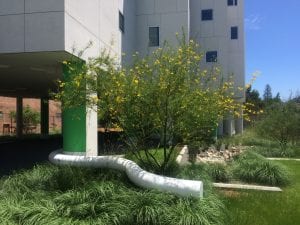In the urgency of the moment, affordable housing organizations are understandably focused on the health of their residents and vitality of their organizations. Green building may seem like an unaffordable luxury at a time like this, but by making buildings healthy and sustainable, we can help build resilience to the COVID-19 pandemic and to future health and climate threats.
Organizations that previously committed to sustainable, green building practices—energy and water efficiency, good ventilation, and nontoxic materials—may find that they and their residents are better able to withstand the stresses of this pandemic. Even though those projects may not have been planned and built with a pandemic in mind, the core elements of green building create conditions for better resilience in the face of a sudden global health threat.
First, the healthy housing elements of green building provide defenses against respiratory illnesses and airborne vectors. The more stringent fresh-air ventilation and filtration requirements of green building standards can reduce exposure to viruses. In multifamily housing, air sealing that creates compartmentalization for individual units—isolating each unit from surrounding units and common areas—results in a lower likelihood of cross-unit exposure or contamination. Durable and easily cleanable materials, such as hard-surface flooring, improve contamination control. Low-off-gassing paints and other finish materials and the prohibition of smoking—typical in green buildings—reduce the triggers for underlying respiratory illnesses such as asthma that may create higher risks with COVID-19. These are all well-known and field-tested green and healthy building methods.
Second, green affordable housing reduces utility costs. The shock of sudden job and income losses has left many unable to pay housing costs and utility bills. With lower costs for key bills, residents and property owners may be better able to manage, or at least be less overwhelmed, than those in conventional housing.
Third, organizations that build green affordable housing often place a high value on resident engagement and community building. These include Mutual Housing California, Aeon in Minnesota, and Habitat for Humanity Kent County in Michigan. Their developments typically include community spaces, resident services, and programming. Together, these generate social cohesion and an infrastructure that helps support residents in a crisis, and facilitates effective disaster response.
These benefits will continue long after the current crisis recedes. The future may bring more pandemics, and it will certainly bring more climate change impacts. Green affordable housing can help weather those crises, too. For example, well-insulated buildings can keep residents safe and comfortable during heat waves—the deadliest impact of a warming planet.
Building new green affordable housing or retrofitting existing buildings to green standards makes more sense than ever—to address unmet housing needs, to create housing that is more resilient against health and climate threats, to create jobs and to generate economic activity. Green building investments, which may have higher upfront costs, pay off with energy savings and public health benefits of equal or greater value.
Additional government subsidies and grants are urgently needed to resume the many green building projects that have been on hold for the past several months, or to provide the last piece of funding needed to get people back to work once the economy reopens.
COVID-19 is quickly changing how we think about the places we live, and about how we will design the new normal. Green building must be part of that vision. It offers a proven way to prevent—and recover from—a range of health and climate challenges. Importantly, green affordable housing ensures that these benefits reach the most vulnerable members of our communities and build their resilience in the face of an uncertain future.
Source:Shelterforce




